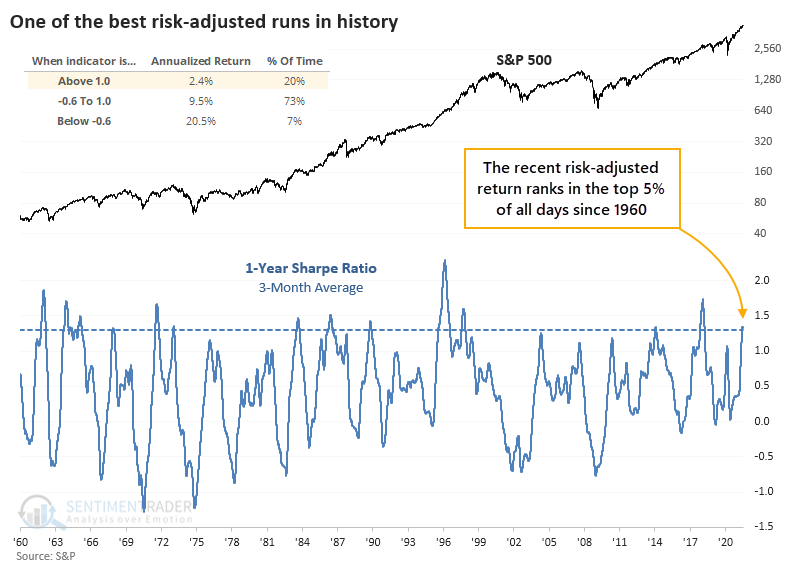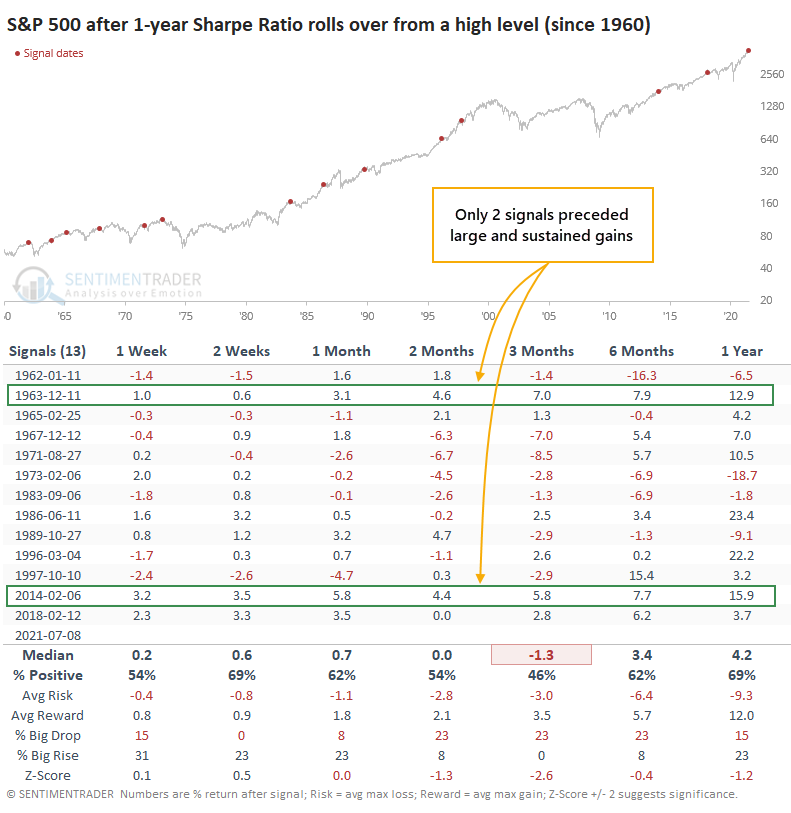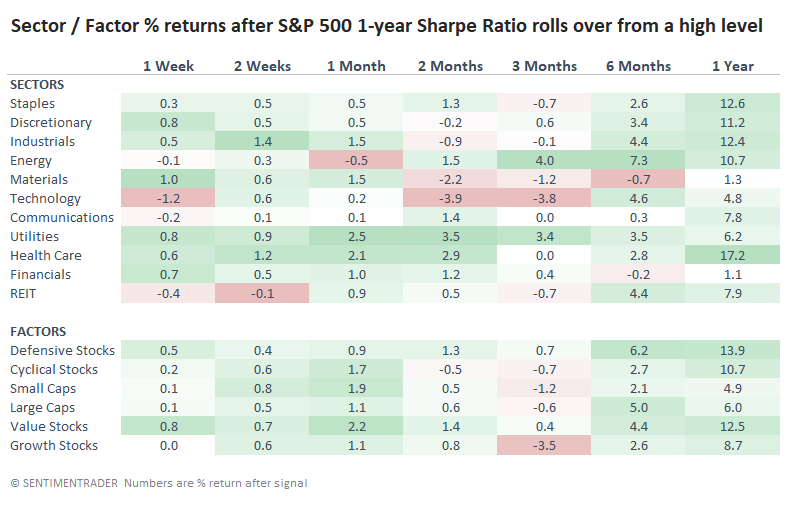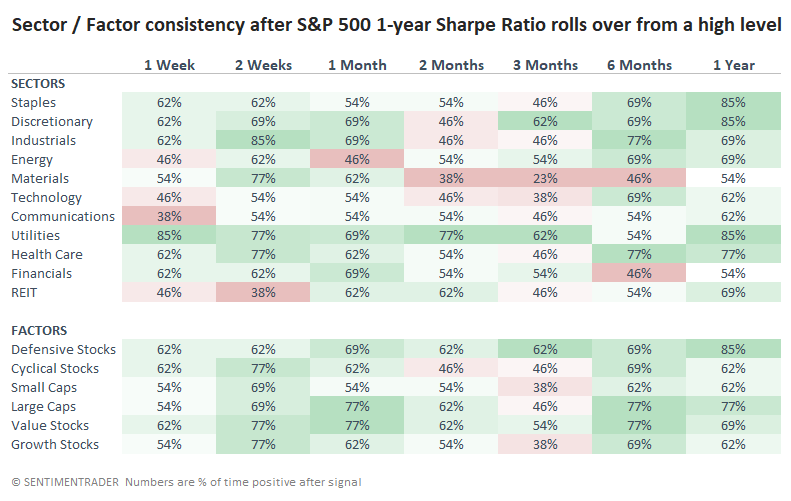A Sharpe Rally Thrusts Stocks Into Historic Territory

For investors, nirvana is a market showing steady and impressive gains without much risk. That pretty much sums up the past year.
Using a version of the Sharpe Ratio, the S&P 500 has seen the best risk-adjusted returns since late 2017 and ranking among the best ever. From Investopedia (edited for brevity):
The Sharpe ratio was developed by Nobel laureate William F. Sharpe and is used to help investors understand the return of an investment compared to its risk. The ratio is the average return earned in excess of the risk-free rate per unit of volatility or total risk. Volatility is a measure of the price fluctuations of an asset or portfolio.
Subtracting the risk-free rate from the mean return allows an investor to better isolate the profits associated with risk-taking activities.
Generally, the greater the value of the Sharpe ratio, the more attractive the risk-adjusted return.
Methodologies for calculating the ratio can vary, and using it as a measure of portfolio managers' acumen is subject to fierce debate. It's still a handy way to determine just how ideal market conditions have been for investors.
THE S&P 500'S SHARPE RATIO
For the S&P, its Sharpe Ratio is just now rolling over from an extremely high level.

After other times the ratio got as high as it recently was and started to roll over, the S&P saw some weakness over the medium-term.

Over the next three months, the S&P showed a negative average return and poor risk/reward ratio. Across all medium- to long-term time frames, returns were below average.
If we focus on the next 1-6 months, only the signals in December 1963 and February 2014 saw the S&P continue its trend uninterrupted. The others either saw weakness at some point during that time frame or only minor gains.
IMPACT ON SECTORS
Looking at other impressive but ebbing risk-adjusted rallies in the S&P and their impact on sectors, Energy, Utilities, and Health Care tended to hold up the best. Technology, Industrials, and Financials showed among the lowest returns. It was not great for Growth stocks over the next several months.

We can see similar behavior with the consistency of returns. Over the next three months, Materials, Technology, Small-Caps, and Growth stocks were higher only 38% of the time or less. The most consistent winners were the more defensive sectors.

The past six months have been particularly rewarding to investors, as momentum has totally steamrolled measures that historically put a brake on future returns. Maybe that means we're in a new paradigm of candy and rainbows for anyone putting their money into the market. It's certainly possible. Whether it's probable is debatable. When a trend feels this good, for this long, it encourages behavior that is very rarely rewarded.

